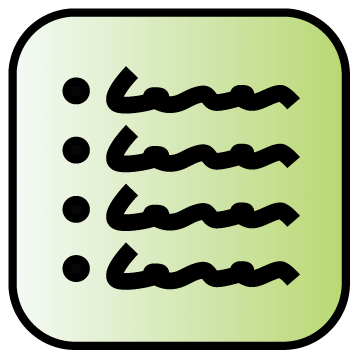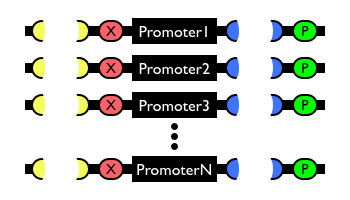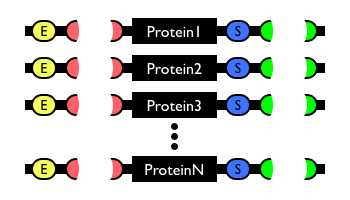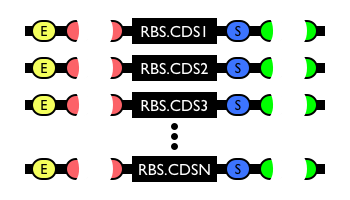Plasmid backbones/Library screening
| Part assembly | System operation | Protein expression | Assembly of protein fusions | Part measurement | Screening of part libraries | Building BioBrick vectors | DNA synthesis | Other standards | Archive |
| Or get some help on plasmid backbones. |
One approach to designing new parts for the Registry is to
- generate libraries of randomized part sequences through use of random oligo's or error-prone PCR
- screen the library for functional parts via FACS or some type of colony assay
- isolate and sequence functional parts
- submit new functional parts to the Registry for reuse and improvement!
Using BioBrick® standard assembly to screen part libraries is not ideal, because once the library has been assembled with other parts (for example, a reporter to facilitate screening of the library), individual part library members cannot be easily extracted again via restriction digest. Hence, several plasmid backbones have been designed to facilitate screening of part libraries.
Note that these library screening plasmid backbones do NOT comply to the BioBrick® assembly standard and should only be used to screen part libraries.
The unique feature of these library screening plasmid backbones is that individual library members can be extracted from the library screening plasmid backbone via restriction digest to obtain a BioBrick® part in either prefix or suffix format, depending on the library plasmid backbone used. But again, the library screening plasmid backbones do not comply to the BioBrick® assembly standard and should be used with caution!
| Chris Anderson, a professor of bioengineering at UC Berkeley, constructed the promoter and protein coding sequence library screening plasmid backbones, along with the ribosome binding site + protein coding sequence library backbone BBa_J23006. | Zhan Jian, as a member of the 2007 University of Science and Technology of China iGEM team, constructed the ribosome binding site + protein coding sequence library backbone BBa_I732950 and BBa_I732952. |
Screening promoter libraries
Are you interested in making a library of promoters with different strengths? Then you might consider using this promoter library screening plasmid backbone BBa_J61002.
|
There are no parts for this table
Screening protein coding sequence libraries
Are you interested in making a protein coding sequence library? Then you might consider using one of these protein coding sequence library screening plasmid backbones.
|
There are no parts for this table
Screening ribosome binding sites & protein coding sequence libraries
Are you interested in making a library of composite parts of ribosome binding site plus protein coding sequence (RBS.CDS)? Then you might consider using a RBS.CDS library screening plasmid backbone.
|
There are no parts for this table
















